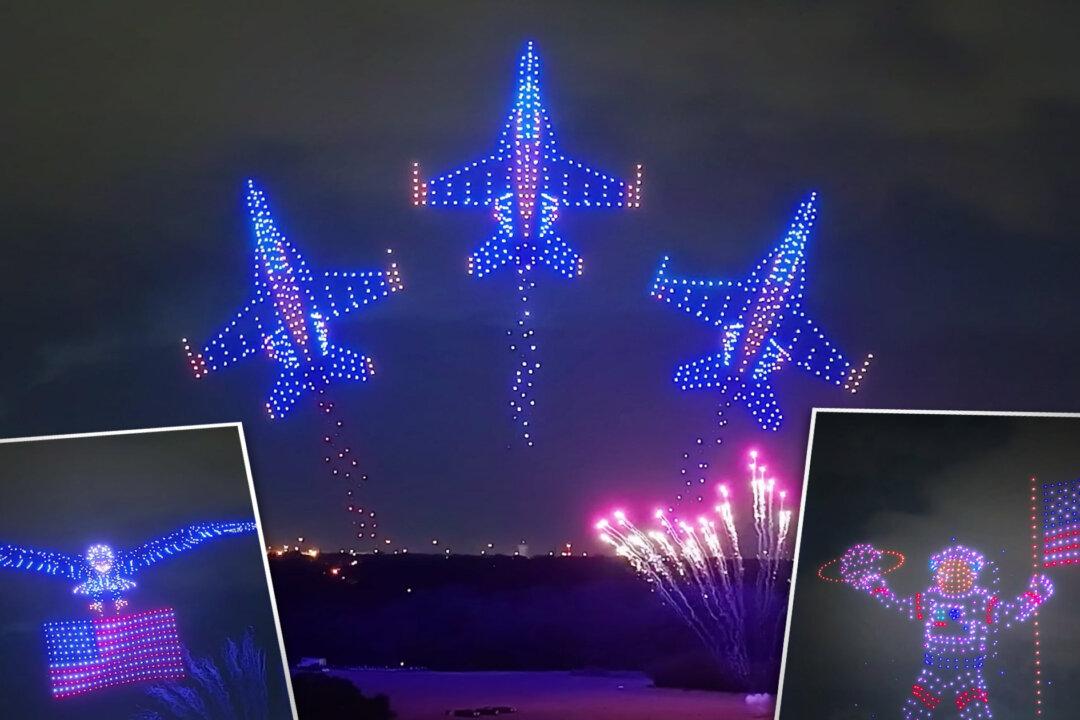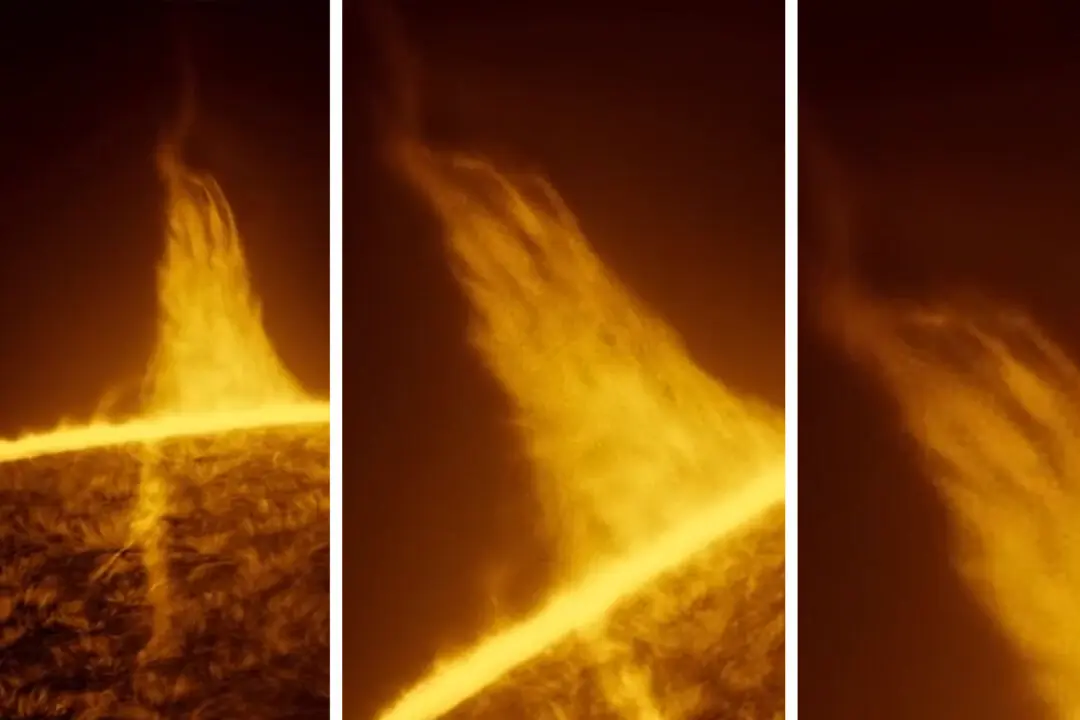Dinosaurs in the sky. Astronauts looming like skyscrapers overhead. Batman in the clouds. With the advent of drones, pyrotechnics has seen advances that are simply mind-melting.
Days ago, Seattle’s Space Needle came alive in lights with a floating 3D version of said iconic tower during MLB’s All-Star Week. In other cities, drones have conjured Super Mario Bros over San Diego and UFOs over Roswell. The celebratory night sky will never look the same.






